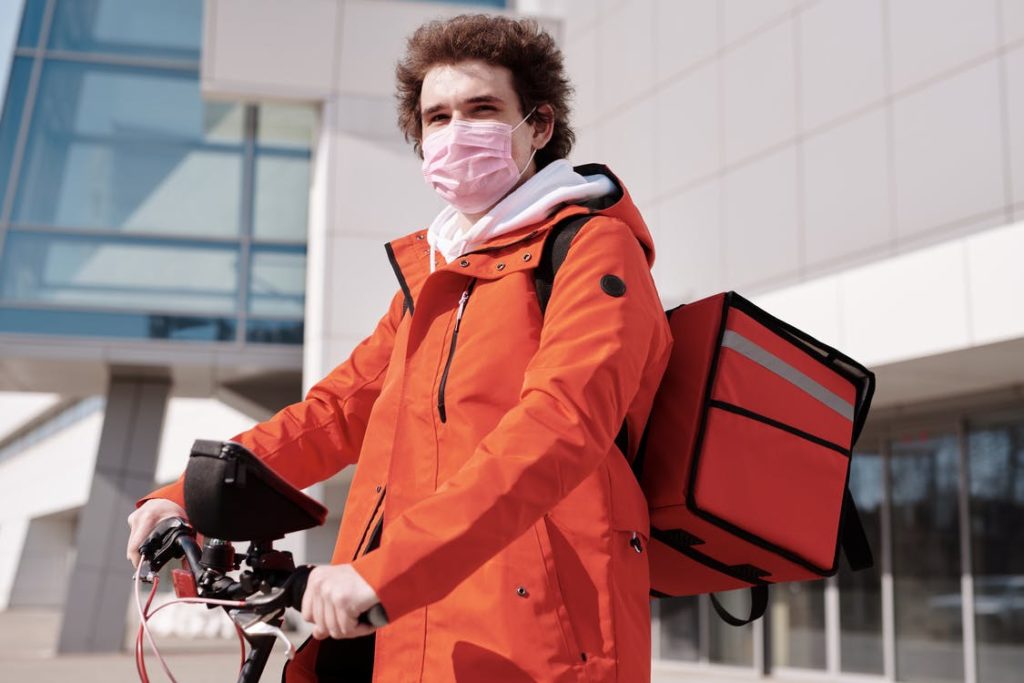People with disabilities and elderly people are not a homogeneous group – whether in how they experience datafication in a wealthy country such as Germany nor in how Covid-19 affects their lives. However, what unites them is the old, highly ambivalent struggle over classifications: Who counts as being at-high-risk? Who receives vaccination soon? Who has to stay at home until fall?
by Ute Kalender
What is the situation of people with disabilities and elderly people in a country like Germany, which was subject to an enormous digitalisation push last year due to Corona? If we believe new and old cyberfeminisms, then people with disabilities and elderly people should be surfing at the top of the Corona-induced datafication wave. For example Donna Haraway, considered people with disabilities as the ultimate examples for cyborgism – the ideal subjects of a technological world. She suggested that because of their intimate relations with communication devices, “[p]erhaps paraplegics and other severely handicapped [sic] people can (and sometimes do) have the most intense experiences of complex hybridization.” And in current texts of computer-friendly Xenofeminisms we regularly encounter people with disabilities. Through the self-determined repurposing of digital technologies, they would reject discrimination they have experienced in the name of a natural order.
It is not hard to guess that for people with disabilities everyday technological life during Corona is far more complex. However, if you are uneasy now because you fear the authenticity cudgel– it is good so. I will not refer to the real experiences of people with disabilities in a datafied Corona world in order to expose the above cyberfeminist notions of people with disabilities as idealized or ideological. Experience, after all, is a too sticky business to seriously relate to. Instead I will stay with the synthetic: with the Instagram videos of crip activists on #ZeroCovid, a movement for a European shutdown in solidarity, with my impressions of my parents’ lives, and with my inaccurate nondisabled projections on people with disabilities in the streets of Berlin.
Let’s start with my 80-ish, West German parents. Lower class background, partly with severe disabilities. In 2020 they were forced into digitalisation. A major telecommunications company switched from analog to digital, terminated their inexpensive 40 years old contract and made them sign a new, more expensive one. After initial annoyance, I bought my parents a tablet. My father had to go to the hospital at increasingly shorter intervals and because of Corona we could not visit him. Perhaps video calls would make his stays more bearable? Soon, my mother was eagerly sending messages via Whatsapp, complaining about my hairstyle in pictures she found on my website, and dragging several puzzled friends from remote cities into video calls. When my father saw my and my sister’s face on the tablet, he was always happy, close to tears, and enthusiastically kissed the tablet’s surface. And yet he couldn’t find access and would probably never use the device in the hospital. The font too small, the interface too confusing, the steps into the online space impossible to remember. Quite different from friends of mine in Brazil. The same age, but with more digital literacy. At least: Before another hospital approached, we managed an early vaccination appointment for my father at the end of February. Despite collapsing servers in North Rhine-Westphalia, a state in the west of Germany.
Other people with disabilities and chronic diseases will probably have to wait until the end of summer for a vaccination. The younger student with spina bifida who does not live in a care home as well as the 55-year-old woman with lung cancer who, freshly operated, now sits isolated at her home. The German vaccination regulation against Corona excludes both from being vaccinated soon. Disability activist Raul Krauthausen sees this as one of the biggest misunderstandings in Germany – that the at-high-risk group consists exclusively of the very old and lives in homes. There are 100,000 younger people with chronic diseases. They employ assistants, have children, partners and friends. All these people fall through the net since the beginning of Germany’s protective measures. They don’t receive masks, protective clothing and rapid tests. They don’t get care bonuses for their assistants or family caregivers, and there are no vaccinations for these people.
The critics do show solidarity with those who are inside the death trap of a nursery home and with the over-80s. Nevertheless, the statements show that a battle has begun: It is the old, highly ambivalent battle over the double-edged sword of risk classification – the inclusion in the risk group with high vaccination priority. The interventions also remind us that all classification involves a moral agenda. Classifications value the lives of some and silence other lives. Classifications grant access to resources to one group and deny resources to another.
And yet the interventions are also led by those who have access to digital devices and infrastructures. These actors skillfully navigate social media such as Instagram and Facebook: The precious disabled, the “escourt cripples”, as the disabled activist Matthias Vernaldi described the more priviledged people with disability. He sadly passed away last year. The interventions are not led by those who live in zones of the Global South in a rich country like Germany. In sum: the interventions show that people with disabilities and the elderly are not a homogeneous group nor a passive one – and certainly not a group that is suffering from living their independent lives. Nevertheless, I also wonder about the point of view of those with whom I rarely speak. Mostly not at all, but who I encounter a few times a day. Betty the princess-prank from Kottbusser Tor, vibrant area in the eastern part of Berlin. Or Scream-Stubi, who lives in a tent near the S-Bahn Ring in Neukölln, a southeastern gentrified borough of Berlin. In their case, it is impossible to say whether their disabilities, their mental issues, emerged during their lives in the street or, conversely, whether their disabilities led to a life in the streets. Betty and Stubi do not have a cell phone, nor are they currently being contacted and invited for vaccination. They fall through the German data grid – perhaps they want to fall through and do not want to be registered. And maybe it’s like a friend with a disability, a professor of rehabilitation sciences, once said in one of our heated, night-long discussions about accessible apps: The problem is not digitalization, the problem is poverty.
About the author
Dr. Ute Kalender is a cultural scientist from Berlin. As a qualitative researcher, she works in a research project on intersexuality at Charité University Medicine and in Digitale Akademie Pflege 4.0–a project on the digitalisation of the care sector.










